I-40 Gets a Redesign in Raleigh
BY Dustin Jones
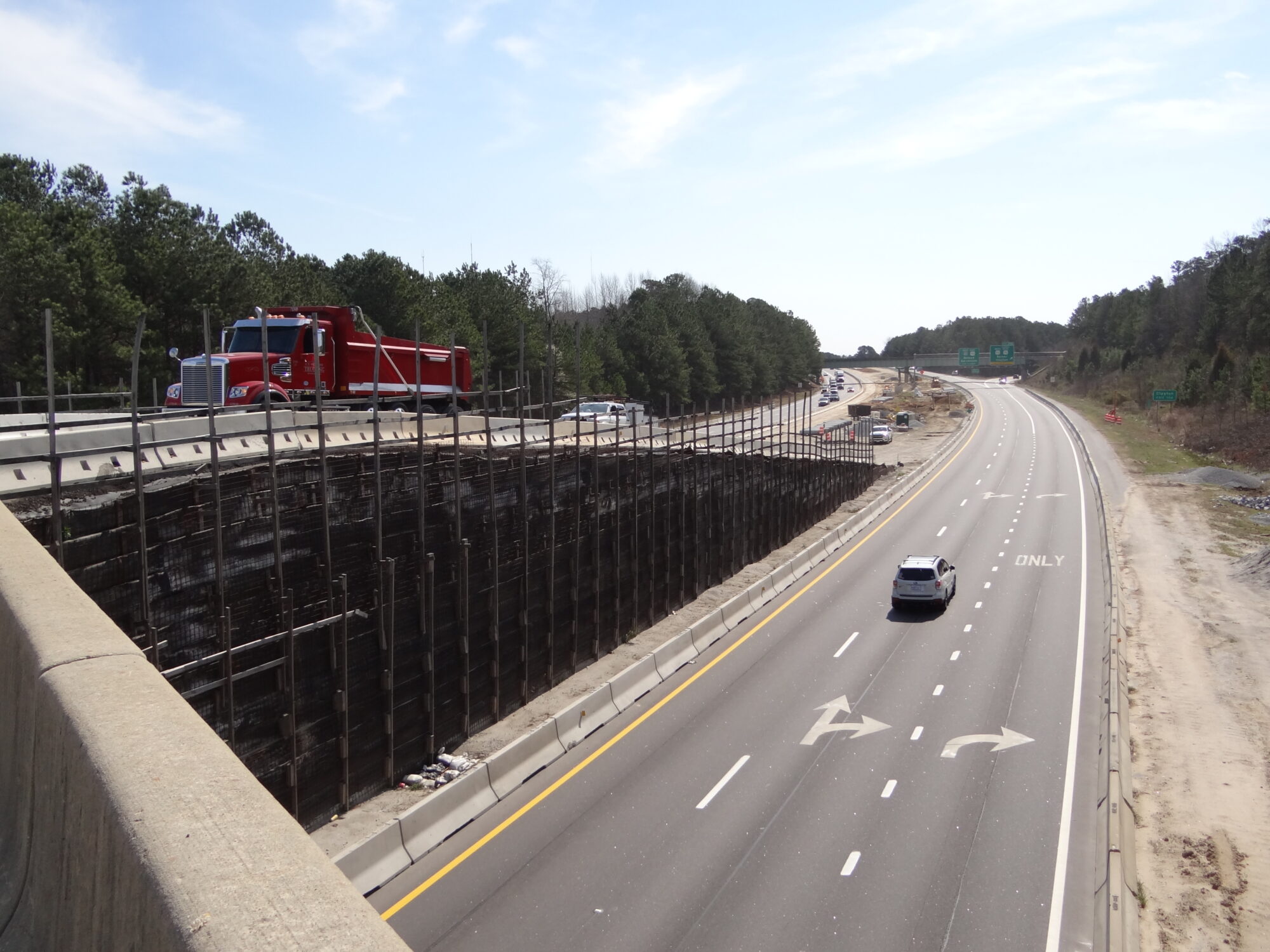
Steady economic development combined with a growing arts and entertainment scene have ushered in a population boom for the Raleigh area. However, one challenge that comes with rapid growth is the strain on infrastructure and ensuring there’s room for everybody on the roads.
One of Raleigh’s most troublesome traffic spots is a stretch of Interstate 40 (I-40) between the Interstate 440 beltline and the suburbs in Johnston County. In 2018, our team at S.T. Wooten began working on a multi-year widening and redesign project for the North Carolina Department of Transportation (NCDOT) to improve traffic conditions and ensure safety for the rising number of travelers in the area.
Web Extra: Read more about the I-40 project parameters,
Building the batting lineup
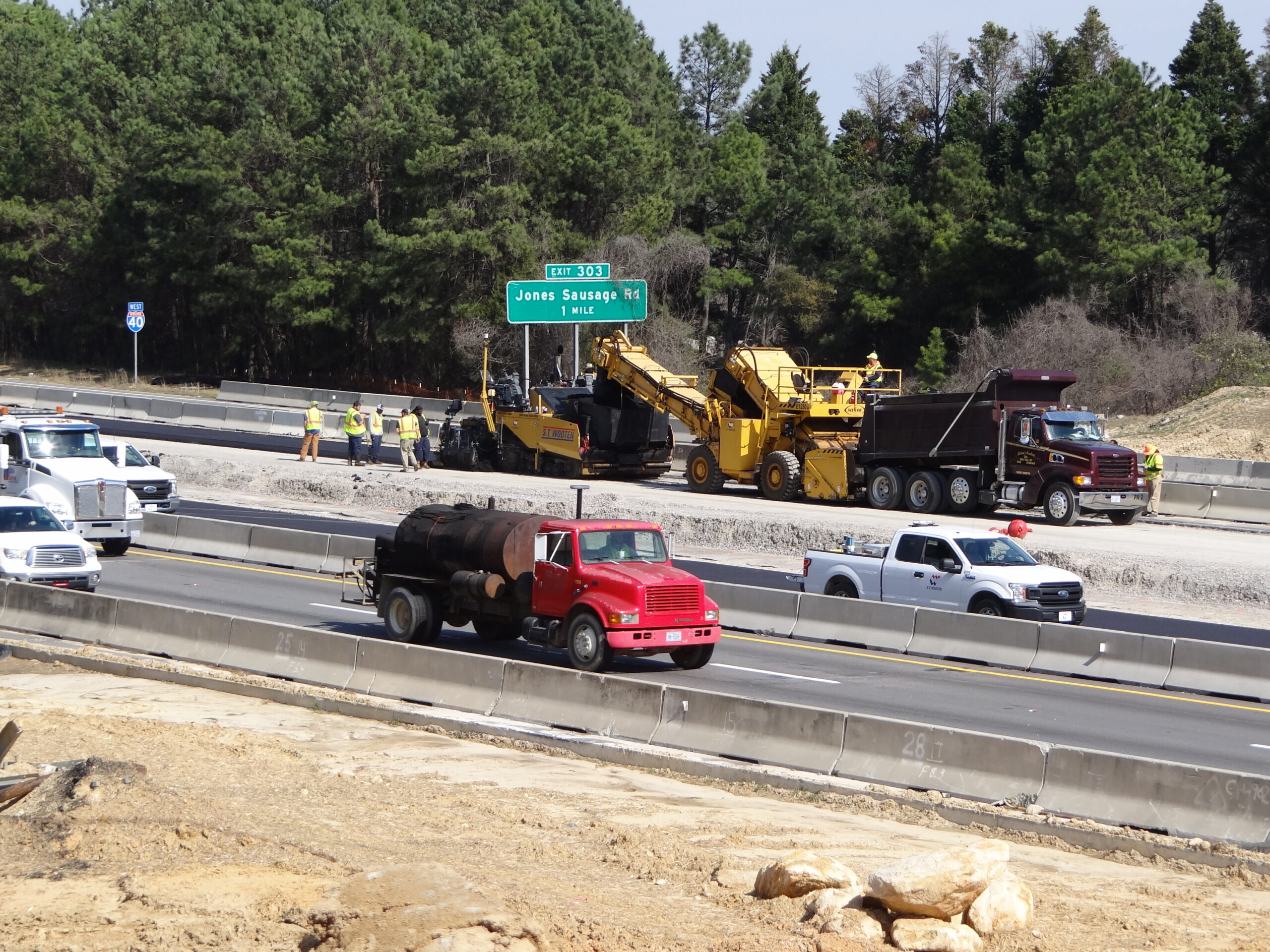
The crew used a material transfer vehicle to feed the paver on its I-40 widening project.
The I-40 design-build project covers nearly 13 miles of the highway extending from the I-440 divide in Raleigh to two miles east of the busy N.C. 42 interchange in Johnston County. Our crews are adding two new lanes in each direction of the interstate, extending four-lane sections to eight lanes and six-lane sections to ten lanes.
One of the biggest obstacles anticipated with this job is the amount of traffic flowing through the work zone. There are several hauling and lane closure restrictions that our team has to keep in mind, which also means a lot of the paving work must be done at night during limited hours. These restrictions also make planning and scheduling of the utmost importance.
To help manage the project and keep different activities running efficiently across this large stretch of highway, S.T. Wooten worked with the NCDOT to establish six separate work areas. These are different sections where construction is happening simultaneously to help with phasing and traffic management.
Rounding first base
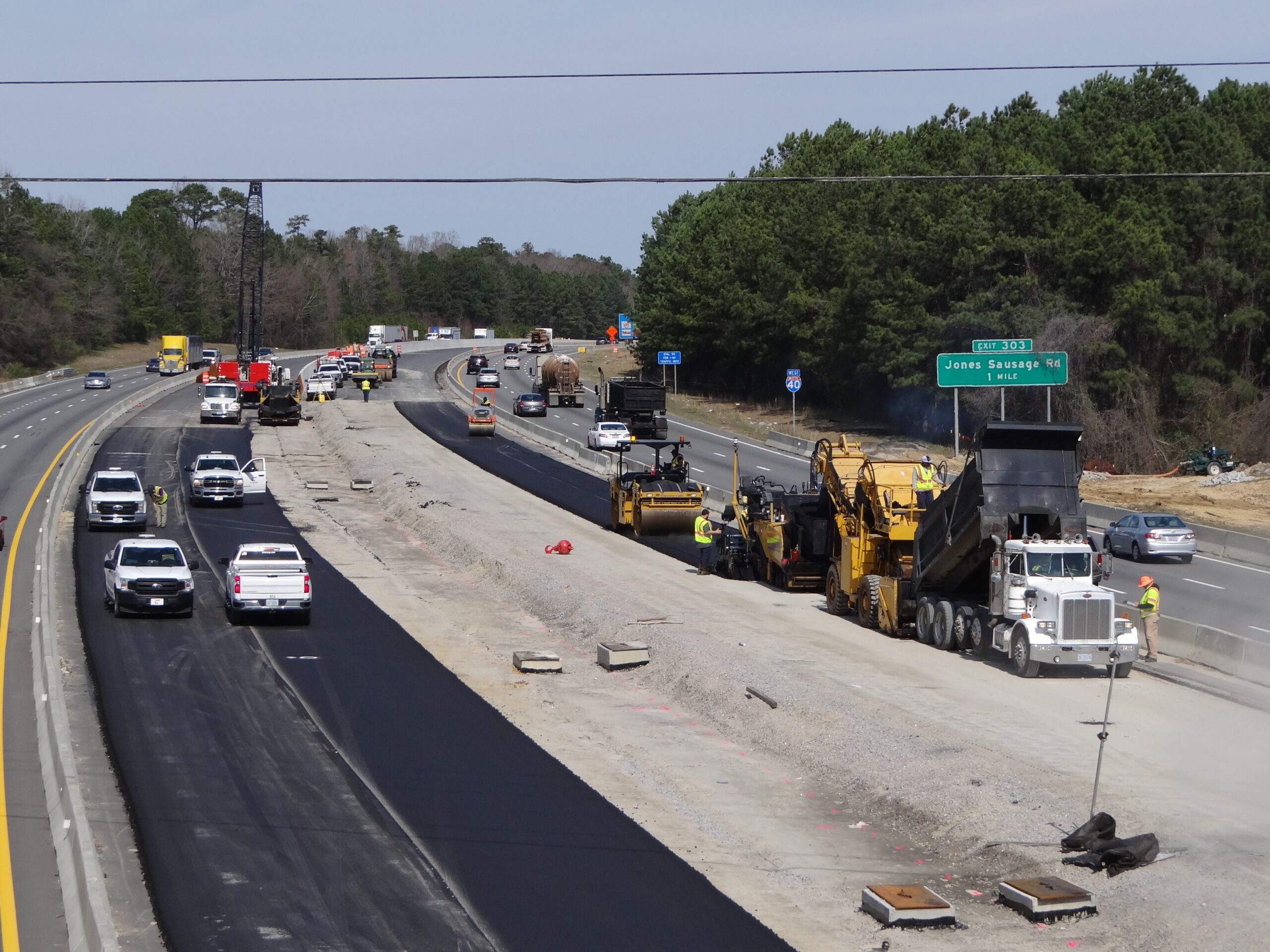
One of the first major initiatives on the I-40 project was to put down 1.5 inches of asphalt overlay across the existing concrete lanes. Crews applied a special coating during this process to adhere the asphalt mix with the underlying concrete. North Carolina Department of Transportation specification 605-1 requires contractors to “[a]pply a tack coat beneath each layer of asphalt plant mix to be placed.” The formula uses additives and polymers to create a monolithic bond for strength and longevity. S.T. Wooten is using a similar product for all other paving operations. This trackless tack S.T. Wooten uses is designed to set in less than 15 minutes and create a strong interlayer bond to reduce slipping, shoving and cracking.
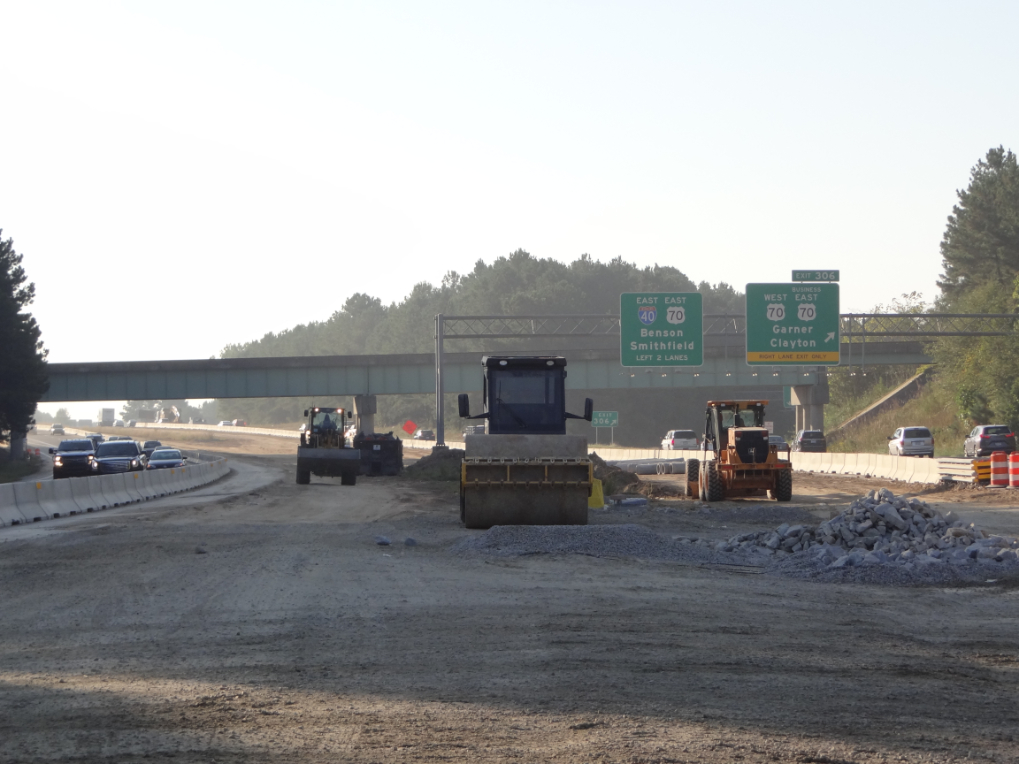
Paving has started on a three-mile section of the highway from East Garner Rd. to the I-440 interchange with careful attention to traffic management. For this stretch, crews paved the inside lanes first and had vehicles pushed to the outside lanes around construction. Then, we reversed course with paving taking place on the outside lanes and had traffic pushed to inside lanes.
Crews are leveraging CAT 1055 pavers equipped with Trimble 3D grade control systems for efficiency and accuracy. The systems give us the ability to conquer complex designs that include transitions, changing cross slopes and super elevated curves. Our crews also use the systems to take out the high and low areas early on in the process while placing base and binder. Additionally, the systems increase road smoothness.
Adjusting to the curve
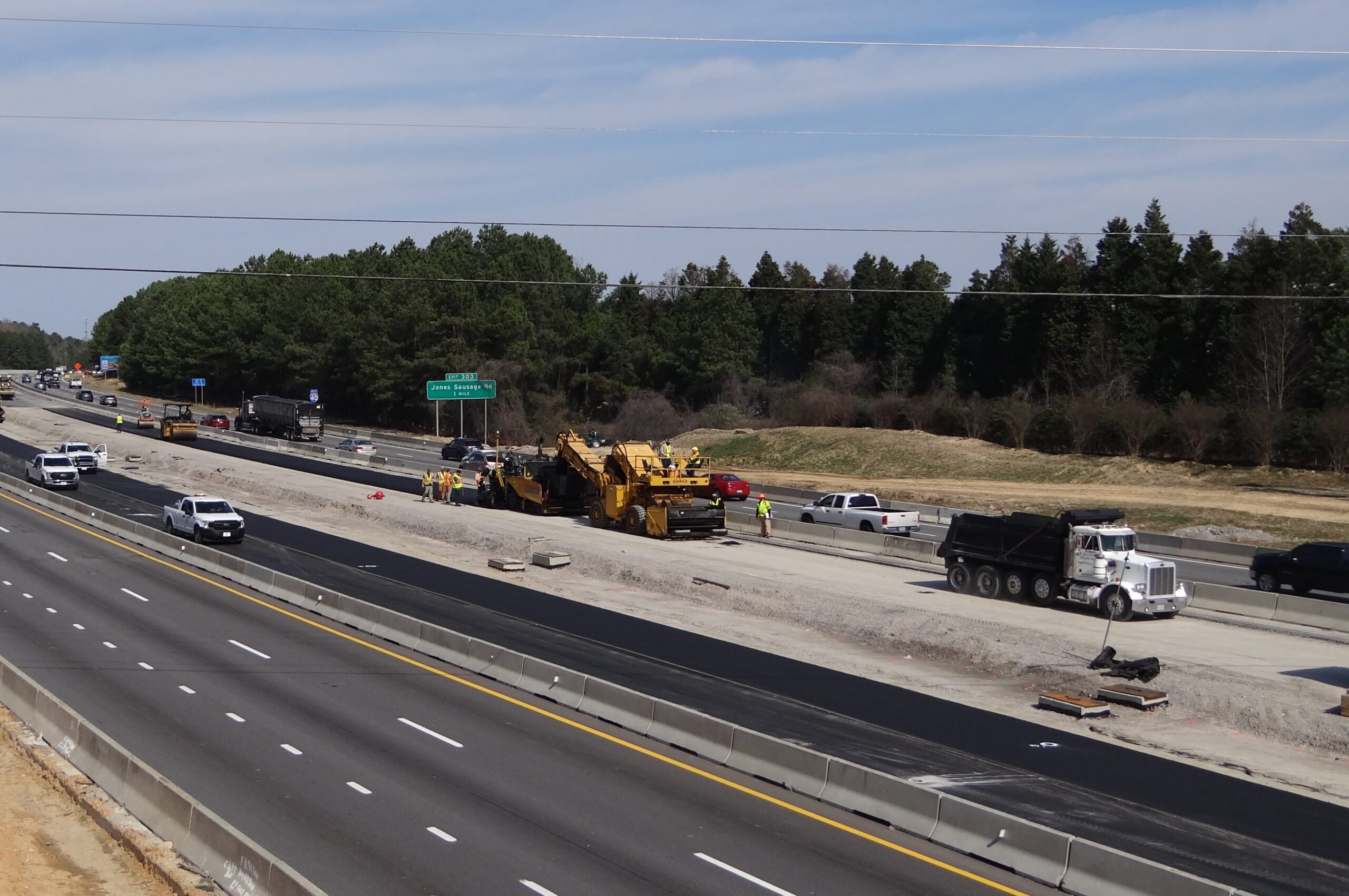
Facing the prospect of some heavy-hitting traffic on this project, we have taken some unique measures to keep work running smoothly. For convenience, we’ve installed two asphalt plants close to the project in the towns of Garner and Clayton.
The Garner plant provides us with several advantages. Nearby, it is also equipped with a temporary ramp that runs from a closed highway bridge right down into the median for direct site access. This ramp will eliminate thousands of loads of asphalt from being hauled in traffic. The ramp off the old East Garner Rd. bridge was built to provide access to the median for construction traffic, which would include asphalt, stone, concrete and dirt trucks. The ramp and existing bridge will be removed once the median has been constructed.
Additionally, there is a temporary road built adjacent to the plant that gives us access to the outside shoulder in the westbound direction. Some of the mix is already down with more to be placed as the highway project is completed.
At the Clayton plant, we will be using a materials conveyer that will allow us to deliver loads directly to the median and bypass traffic. This conveyor is expected to help save thousands of loads from being hauled in traffic.
Hitting the diamond
In addition to widening the highway, our crews are also managing construction of 15 new or revamped bridges along I-40 as part of the design-build project. One notable structure is a new flyover bridge coming from I-440 westbound to I-40 eastbound.
Along with these activities, crews are reconstructing the entire interchange where I-40 merges with N.C. 42 and converting it into a Diverging Diamond Interchange (DDI) with dual bridges. A DDI allows two directions of traffic—guided by traffic signals, pavement markings and concrete barriers—to cross over each other at traffic signals to get onto the interstate.
The DDI concept is fairly new in North Carolina, but it has proven successful in allowing drivers to come through an intersection more smoothly and safely. This will be the second DDI that S.T. Wooten has worked on, having previously helped the state build the second-ever DDI near the coast.
Headed for home
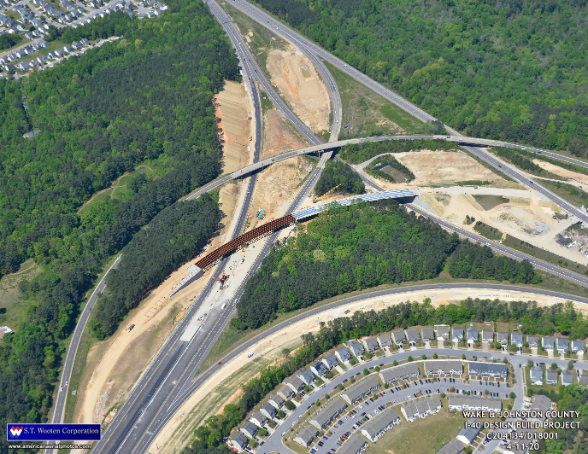
While solid planning and the use of technology is helping our team adjust to challenges on the I-40 project, it’s the hard work from our crews that has really brought us this far. We are extremely lucky to have the critical personnel in place who embrace the challenges that this project brings; they always have the company’s best interest in mind when coming up with a solution.
Our crews have proven up for the challenge and their main focus continues to be on building continued momentum toward our 2022 target deadline. With our team fielded in the right positions, we’ll round third to a successful finish and a more open highway for travelers in North Carolina’s capital city.
Dustin Jones is a project manager for S.T. Wooten, Wilson, North Carolina.
